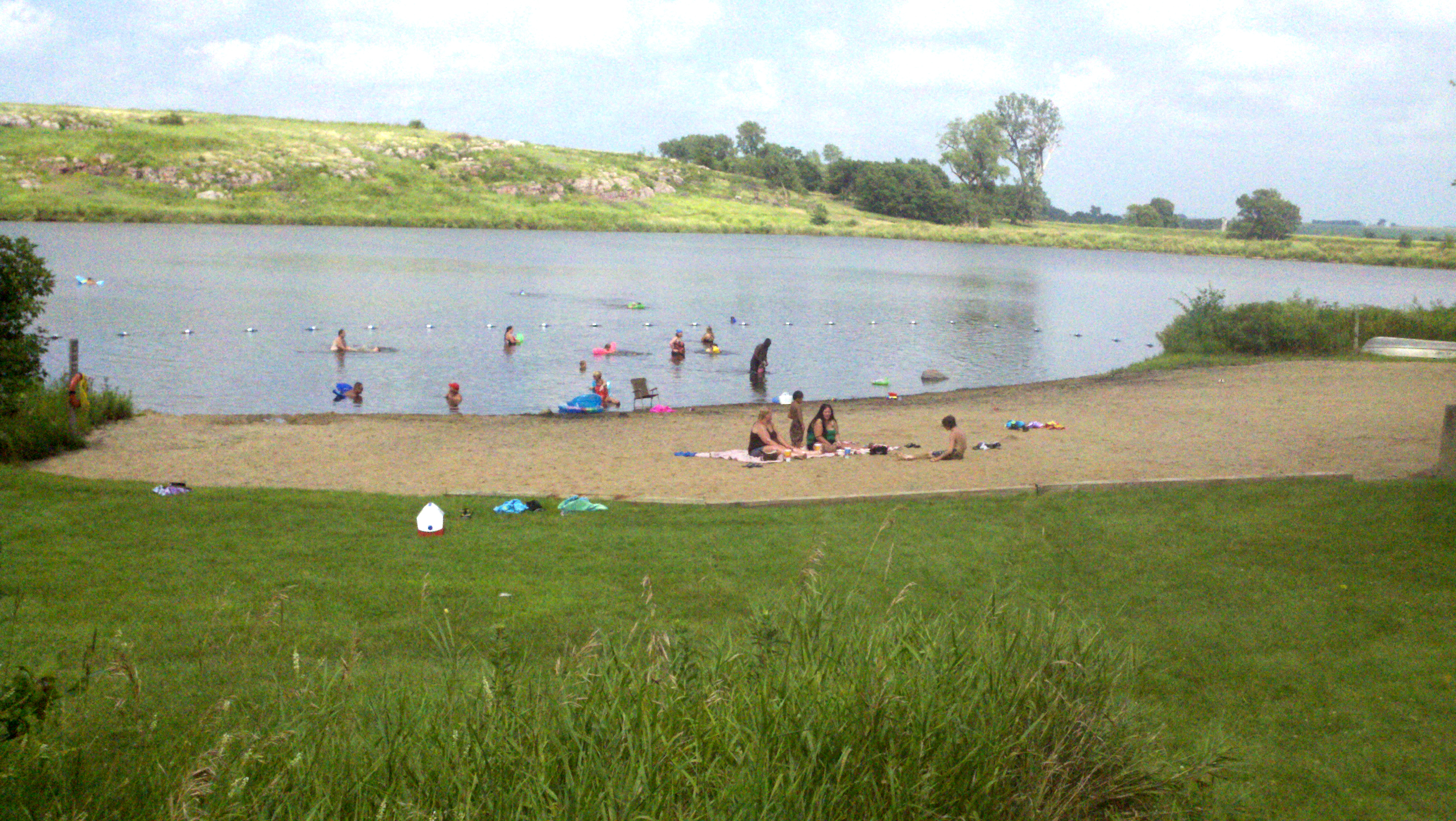
The Department of Natural Resources announced Wednesday morning, June 22, the dam and lake at Blue Mounds State Park will not be rebuilt.
It’s not the answer the local park users were hoping for, but the decision will likely have long-term implications for water quality and habitat.
Scientists, engineers, hydrologists and others have been studying the area since June 2014 when flood damage at the dam drained the lake.
Erika Rivers, director of Minnesota state parks and trails, said the decision was not made lightly.
“We know water recreation opportunities, including swimming, are limited in Rock County, and we empathize with those who expressed a desire to have the dam and lake restored,” Rivers said.
“However, given all of the factors involved with this site, we believe the most responsible course of action is to remove the lower dam and restore Mound Creek to a natural stream channel.”
Those factors centered on water quality, endangered species and historic significance.
For example, ongoing water quality problems, in particular the presence of E. coli bacteria, would have the potential to sicken swimmers if a lake were restored in this area.
Luke Skinner, director of ecological and water resources, said hydrological flow indicates pollution sources are from outside of the Blue Mounds State Park.
“It involves the entire watershed area and land management practices upstream,” Skinner said.
He said restoring the creek would contribute to efforts of the multi-county effort, “One Watershed, One Plan,” to improve water quality in southwest Minnesota.
The need to protect state and federally endangered fish species, including the Topeka shiner, factored into the decision, as did historic considerations.
The dam is listed on National Historic Register of places, and rebuilding it to current safety standards likely would be incompatible with the area’s historic characteristics.
Cost was also a consideration.
Estimates to rebuild the dam and restore the lake are around $6.1 million, compared with an estimated $1.4 million to remove the dam and embankments and reconstruct a 16- to 20-foot-wide stream channel.
DNR officials arrived at the decision after analyzing several options for the dam site. These were presented at a February public forum in Luverne where residents of seven local cities and townships provided feedback, and public comment over a month-long period.
The feedback, however, did not show a clear consensus about how to proceed. In the end, the agency decided against rebuilding the damaged structure.
Campers don’t seem to mind
Blue Mounds State Park Manager Chris Ingebretsen said the absence of the lake hasn’t so far had a big effect on park attendance.
“There are other reasons people come to the park — the prairie, Sioux quartzite, bison,” he said. “These are still really big draws for people — probably bigger than the lake.”
Last year, the first full year without the lake and beach, Ingebretsen said reservations were down only slightly, and he suspects that was due to water contamination that prevents park visitors from using park water for drinking or bathing.
“Last year we had some of the nicest camping weather we’ve ever seen,” he said.
“This year we’ve had a lot of rainy weekends and really hot weekends, so that’s also affecting numbers.”
Next stage:
Citizen Advisory Committee
Before the dam is removed and the creek restored a technical plan and design process will be spelled out.
The Minnesota Historical Society, U.S. Fish and Wildlife Service and the Federal Emergency Management Agency will consult with each other and with the public on the best plan going forward.
The DNR is inviting people to help the agency reshape the park’s future.
“Blue Mounds State Park is an important part of the overall Minnesota state park and trail system,” Rivers said.
“We are committed to engaging the public and local officials in discussions around site restoration, ongoing issues with water supply, and future recreation opportunities at the park.”
Specifically, Rivers hopes the public can help the DNR explore future options based on the park’s current features, including prairie, the bison herd and rock climbing as well as fishing or paddling in Mound Creek.
Anyone interested in serving on the citizen advisory group should send a letter of interest by July 13 via email to rachel.hopper@state.mn.us or via U.S. mail to: Rachel Hopper, DNR Central Office, 500 Lafayette Road, St. Paul, MN 55155.
The letter should answer the following questions:
•What is your vision for the future of Blue Mounds State Park?
•Why are you interested in participating on the citizen advisory group?
•What education, work experience or expertise would you bring to the group?
“We hope to hear from people with a variety of expertise who can join us for discussions about topics such as resolving water quality issues, expanding recreation options and marketing the park,” Rivers said.
The group will meet regularly starting in August and will make recommendations to the DNR throughout the fall. There will be opportunities for public comment during this time as well.
For more information on Blue Mounds State Park, visit mndnr.gov/bluemounds.


